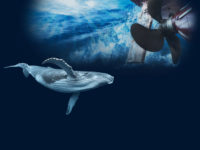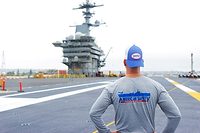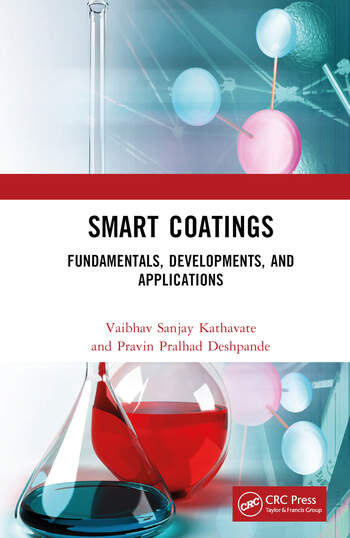The Role of Smart Marine Coatings in Meeting CII Requirements

A 70-meter ice-going vessel with the freshly applied HFR product
As we continue the push towards global decarbonization, the International Maritime Organization’s (IMO) GHG strategy is aiming to reduce the carbon emissions of the global fleet by 40% by the year 2030 and is targeting a 70% reduction in CO2 emissions by 2050. The Greenhouse Gas Strategy was approved by the IMO in 2018, and the reduction rates are compared to the baseline year of 2008. Short-term improvement measures including energy efficiency requirements for large ships are to be effective January 1, 2023. For example, the Energy Efficiency Existing Index (EEXI) is a method for regulating the speed and power limitations of ships and is applicable for all vessels above 400 GT falling under MARPOL Annex VI.1
The roughness of a ship’s hull surface affects its hydrodynamic performance and tends to increase due to the age of the ship, improper paint application, coating damage, wear, and biofouling. An increase in hull roughness leads to an increase in a vessel’s fuel consumption and greenhouse gas (GHG) emissions. This phenomenon is becoming a greater issue for ships as there is an ever-increasing pressure from regulators to implement energy-efficiency measures. Another example of this, is IMO’s Carbon Intensity Indicator (CII), which is an operational efficiency parameter for ships with a gross tonnage over 5,000 GT.1 Both the EEXI and CII measures will lead ship owners to invest in energy-saving devices via retrofit or reduce the operational carbon emissions of their vessels via engine power limitation.1 Based on previous research in the field of ship energy and efficiency and the role of hull coatings, the CII parameter will be affected by the vessel owner’s choice of surface preparation, hull coating system, and ability to maintain hull and propulsive efficiency.
Types of Marine Coatings Technologies
Conventional anti-fouling coatings leach biocides, such as copper salts and zinc, to kill off fouling organisms and maintain a clean hull.2 Since 2008, the IMO has banned the use of organotin-based ablative coatings due to their detrimental effects on non-target marine organisms.3 The Soft Foul Release (SFR) polymeric coatings are now being implemented as an alternative to the ablative technologies, as limited marine life can adhere to the SFR surfaces due to their smoothness, slip, chemical amphiphilicity, and gradual release of F-organo oils.4 The newly emerging Hard Foul Release (HFR) coatings are an environmentally friendly alternative to the conventional toxic anti-fouling and SFR paints as they eliminate the need for biocides, fluoropolymers, and F-organo oil release.
The HFR’s anti-fouling mechanism resembles that of the SFR coatings. The difference is the improved mechanical endurance, ease of repair, and absence of substances detrimental to the aquatic environment. Just like SFR paints, the HFR coatings are expected to reduce the vessels’ drag and carbon footprint as well as lower the underwater radiated noise (URN) levels by reducing the propeller and engine load at constant speed.5
Graphite Innovation and Technologies Inc. (GIT) has recently patented6 the HFR technology, which is based on the interplay between the self-assembly of polymeric blends upon spraying and the cross-linking mechanism. The amphiphilic polymers with graphene nano-pigments upon thermo-reactive curing, obtain a rigid, amphiphilic finish, capable of minimizing the adhesive interaction with various fouling species.
Hull Cleaning and Propeller Polishing Activities
An active method to maintain a ship’s highest operational performance and lower its carbon emissions is to keep the hull and the propeller clean from biofouling. Underwater hull and propeller cleaning techniques can restore the clean profile of the surface; however, they can also generate other issues:
- Previous studies demonstrated that various hull cleaning techniques can significantly increase biocide emissions, namely copper compounds, from recreational vessels.7,8 Also, biocide-based coatings will increase in roughness after cleaning, which will reduce the performance of the ship over time.
- In the case of biocide-free coatings, such as silicone-based SFRs, the coating can be damaged if cleaned, due to its low mechanical strength.
- Both silicone-based SFRs and biocide-based coatings reduce their performance after underwater cleaning due to depletion of the release mechanism (copper biocide or silicone oils).
Anti-Fouling Performance
The anti-fouling properties and durability of an HFR coating help maintain an undisturbed hull throughout a vessel’s lifecycle, which includes both the shear-induced fouling self-release upon the ship’s propulsion, and the soft grooming procedures. The mechanical grooming of vessels (habitual and frequent mechanical maintenance of submerged ship hulls with minimal impact to the coating) while in port has been proposed as a viable method to control biofouling growth.9,10
GIT has partnered with the group of Prof. G. Swain (Center for Corrosion and Biofouling Control) to quantify static fouling of the HFR product, and to validate the in-water grooming11 and to quantify efforts on maintaining the coatings free of fouling and to compare with commercial SFR and ice-resistant “inert” industry standards. The three outlined paints were coated onto three four-by-eight-foot sand-blasted steel plates and immersed in the ocean water in Port Canaveral, Florida for five weeks (July, 2021), followed by an assessment of their foul-release potential.
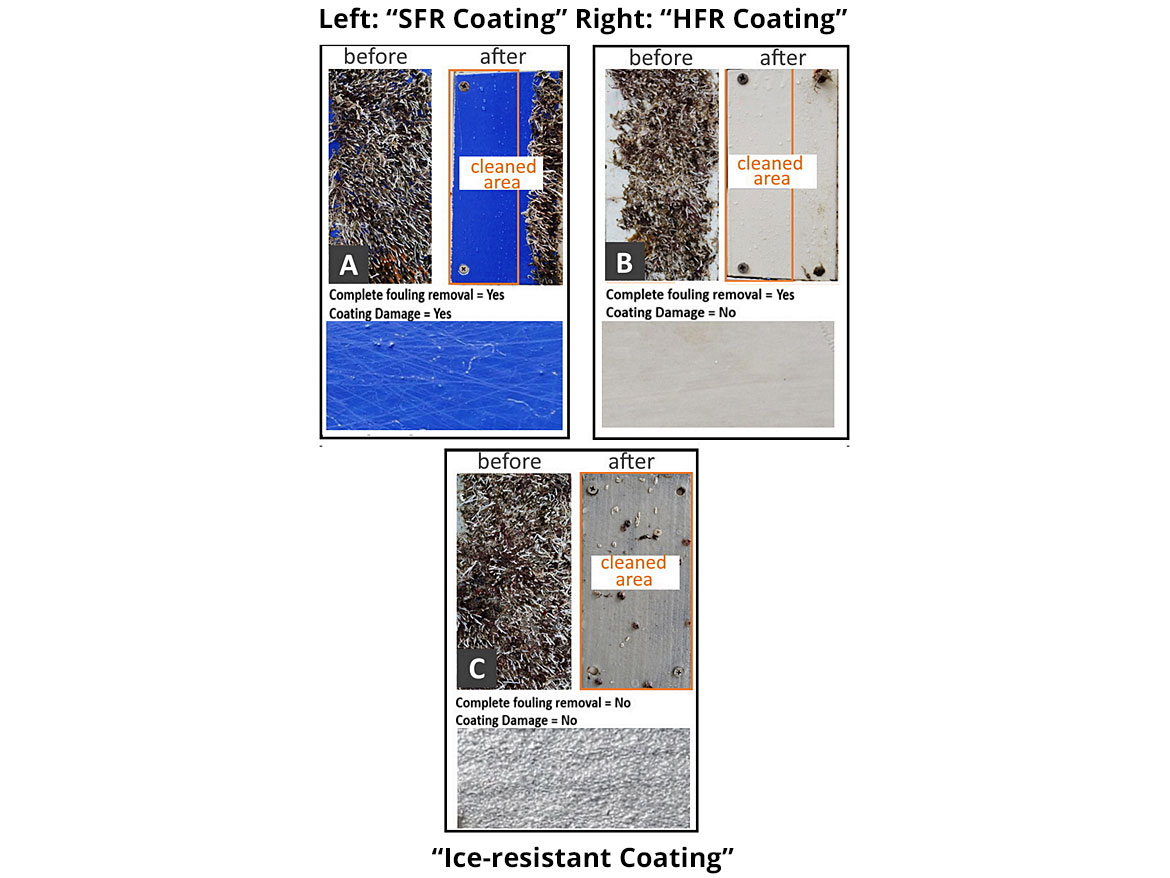
FIGURE 1 ǀ Visual comparison of the three tested systems at various stages of the biofouling and grooming study: (A) SFR coating – blue panel, (B) HFR coating – white panel, (C) ice-resistant coating – grey panel. In each one of the three sections, the left specimen depicts the panel pre-grooming, the panel to the right represents the surface area cleaned by the robotic nylon brush (outlined in orange), and the lower image represents a photograph of the coating’s finish post-grooming.
The images above (Figure 1) show the comparison between three coatings after kept stationary for five weeks. Soft and calcareous fouling consisting of mainly tubeworms was present on all surfaces at a minimum of 30% surface coverage. Barnacles were present on all surfaces, but for the SFR and HFR coatings they were present as partially grazed (broken by fish) organisms. All coatings were subject to grooming using a commercial nylon hull cleaning brush, which ran four passes along the tested topcoats. The only coating type to fully clean without any damage was the HFR product. This coating was also not fully exposed to the brush, yet all hard fouling was removed by water flow running adjacent to the bush (Figure 1: B), indicating very-low fouling adhesion and, thus, demonstrating a strong foul-release performance. Visual comparison of the groomed coatings did not reveal significant damaging to the ice-resistant coating or the HFR coating, while the SFR coating developed scratches and grooves, which most likely resulted from the calcareous debris generated during the mechanical cleaning, practically confirming the superior in-field mechanical robustness of the HFR system.
Quantifying the Effect of HFR on Fuel Efficiency and Power through Speed Trials
The HFR coating has demonstrated an ultra-low friction coefficient when the coating is first applied on a vessel freshly out of dock. A smooth, low-friction coating can provide significant fuel savings (depending on how long they can maintain this clean surface) and throughout the dry-dock cycle due to its increased durability and ability to maintain its low surface friction for extended periods.
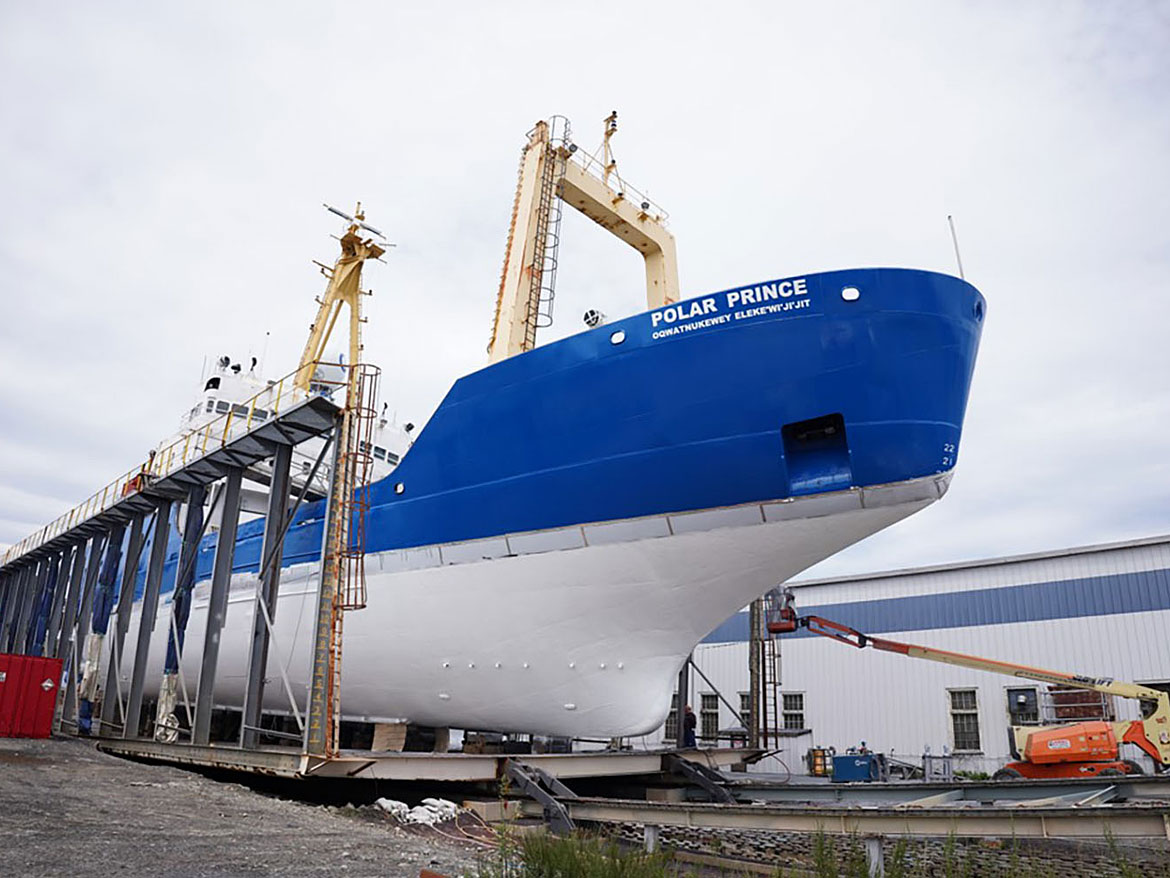
Speed trials were conducted by a class society (Lloyd’s Register) according to ISO 15016:2015, on a 70-meter ice-going vessel (Figure 2). These speed trials were conducted prior to retrofitting the vessel’s hull with the HFR coating and post-retrofit under similar environmental conditions.
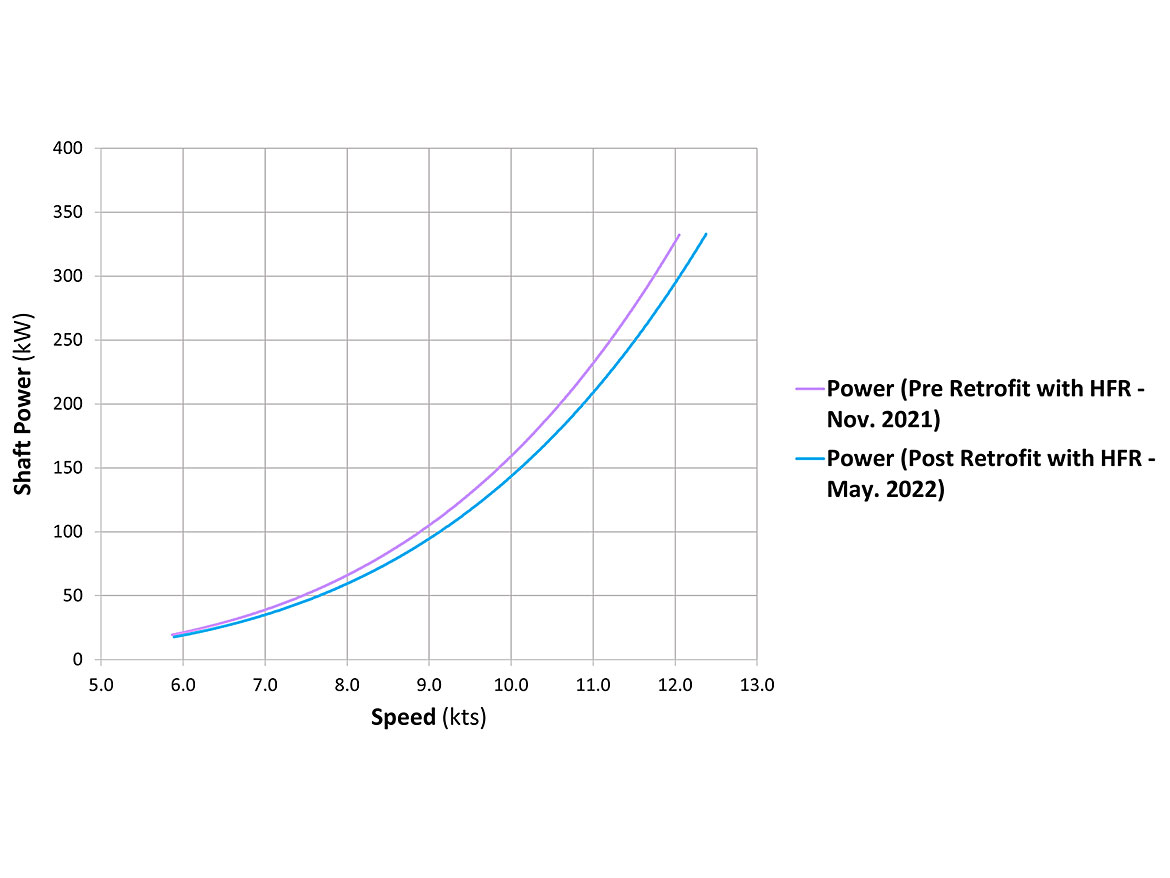
The results in Figure 3 show that the vessel achieved a reduction in shaft power of approximately 10.4% at constant speed compared to the previous hull condition, which was a cleaned, ice-breaking coating system.
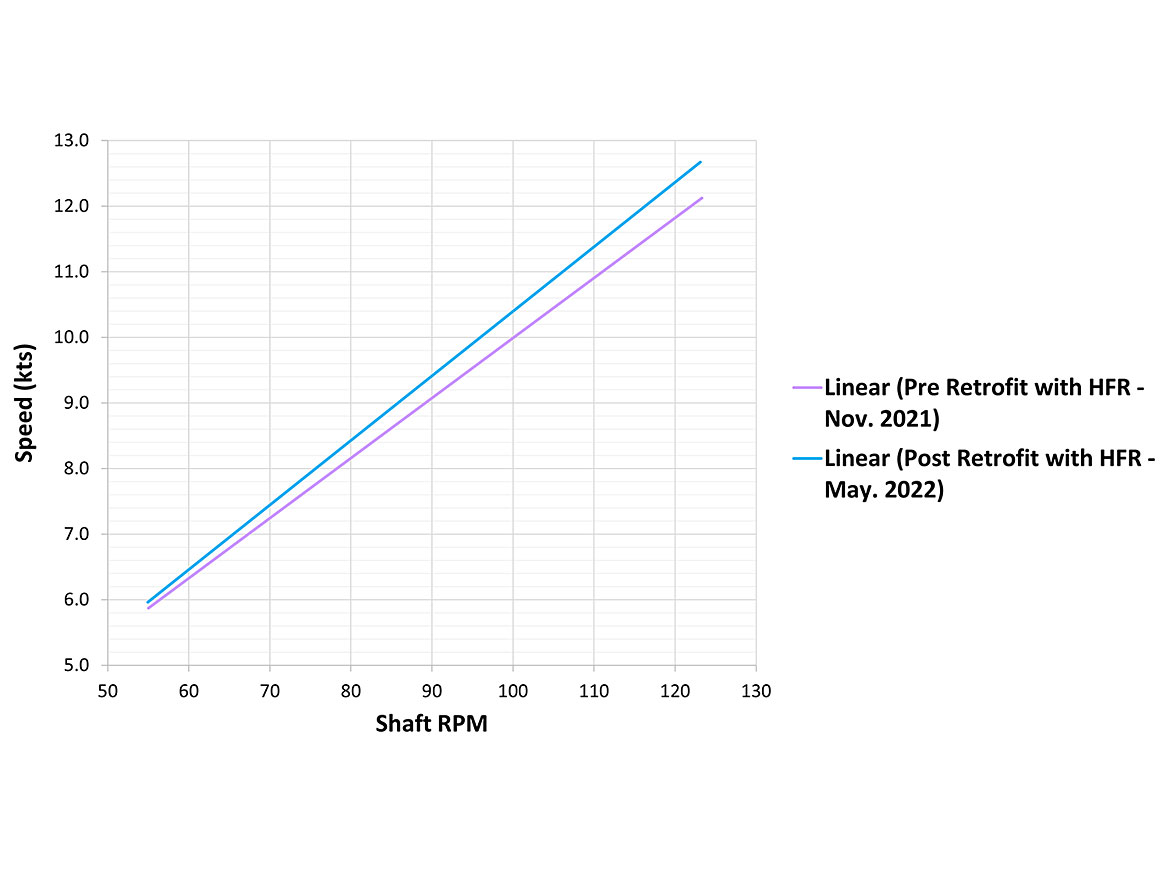
A max speed gain of 0.60 knots (5.0%) could also be extracted from the data collected (Figure 4), with an average speed gain of 3.7% at constant shaft RPM. These real-world results confirm the theoretical concept that a smoother hull coating with a lower coefficient of friction can have a resounding effect on vessel efficiency and, in turn, CO2 emissions.
The CII formula for ships is focused on the annual operational efficiency of each vessel greater than 5,000 gross tons (GT); based on their distance travelled, fuel consumption, fuel type, and capacity. Therefore, any incremental benefits in fuel efficiency are realized year-over-year in the CII calculation as follows:

The equation below calculates the required CII for ships from 2023 – 2026 relative to their 2019 reference line:
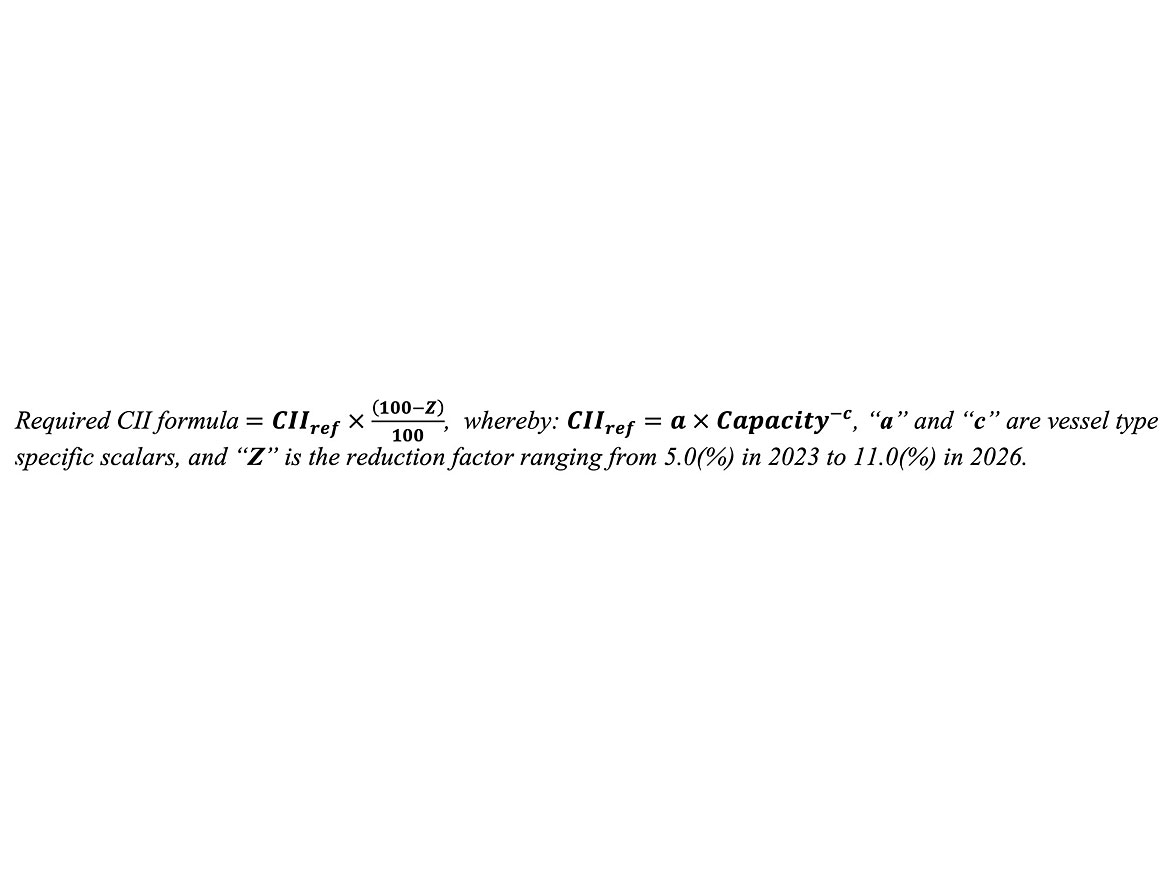
Depending on the original coating system, making the switch from a traditional topcoat to the HFR product can improve a ship’s annual CII rating to meet the owner’s CII reduction requirements and improve their bottom line.
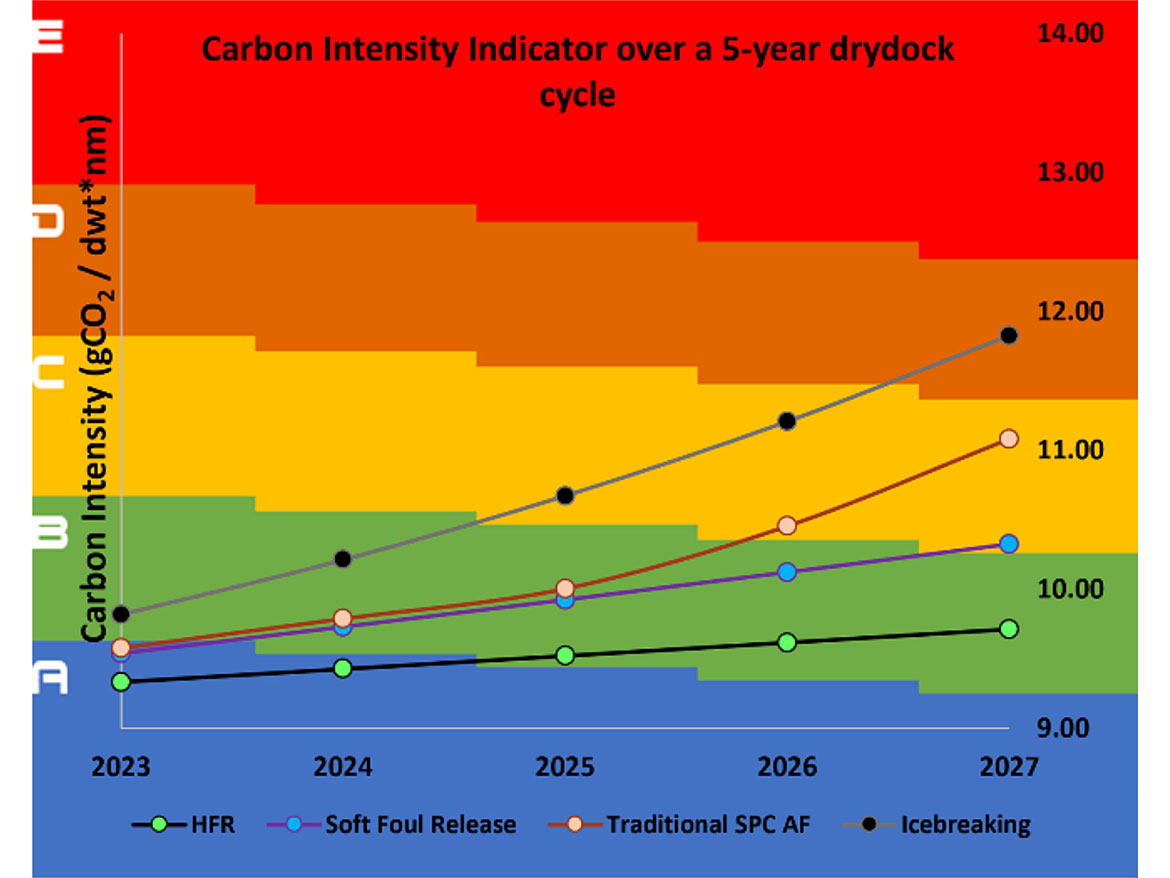
Figure 5 shows the reference CII value for an ~26,500 DWT gas carrier, which dry-docked in 2022 and applies a 2.0% CII reduction factor year-over-year until the next planned dry-dock in 2027. Values of performance have been calculated using both field and lab performance data for four different coating types. The choice of the HFR coating for this vessel results in an A-rating out of dock and slowly increases to a B-rating by year five of operation.
Both the SFR and SPC coating systems also achieve an A-rating out of dock and both progress to C‑ratings by year five. Lastly, the icebreaking coating system results in a B-rating out of dock and a D-rating by year five. These year-over-year simulated CII values are a result of three main factors: achieved hull roughness and skin friction out of dock, resulting hull roughness increase from hull grooming measures, and effectiveness of the anti-fouling/foul release mechanism in various fouling environments.
Conclusions
The new era of hard foul release marine coatings can maintain an optimal CII rating for vessel owners through superior mechanical properties and the ability to maintain low hull roughness and skin-friction drag. Ship owners must employ the correct hull maintenance plan for the choice of coating based on vessel routes, trade, and activity. The choice in hull coating system can be the difference between an A- and a D-CII-rating for well performing vessels, and for poor performing vessels, it can mean the difference between a B/C- and an E-rating, warranting the need for a corrective action plan from the vessel owner. The CII calculation results show that the last two years of the coating system’s lifetime are critical for the vessel to maintain a good CII rating, in which case the HFR and SFR systems have the greatest advantage.
References
1 IMO, “Further Shipping GHG Emission Reduction Measures Adopted,” 2021. https://www.imo.org/en/MediaCentre/PressBriefings/pages/MEPC76.aspx (accessed Jan. 10, 2022).
2 Schultz, M.P. “Effects of Coating Roughness and Biofouling on Ship Resistance and Powering,” Biofouling, vol. 23, no. 5, pp. 331–341, Oct. 2007, doi: 10.1080/08927010701461974.
3 Dafforn, K.A.; Lewis, J.A.; Johnston, E.L. “Antifouling Strategies: History and Regulation, Ecological Impacts and Mitigation,” Mar. Pollut. Bull., vol. 62, no. 3, pp. 453–465, Mar. 2011, doi: 10.1016/J.MARPOLBUL.2011.01.012.
4 Zhang, Z.P.; Qi, YH.; Ba, M.; Liu, F. “Investigation of Silicone Oil Leaching in PDMS Fouling Release Coating by Confocal Laser Scanning Microscope,” Adv. Mater. Res., vol. 842, pp. 737–741, 2014, doi: 10.4028/WWW.SCIENTIFIC.NET/AMR.842.737.
5 Vard Marine Inc. “Ship Underwater Radiated Noise,” 2019. Accessed: Jan. 10, 2022. [Online]. Available: https://publications.gc.ca/collections/collection_2021/tc/T29-151-2019-eng.pdf.
6 Gaier, M.; AlGermozi, M.; Rodionov, I. “Composition for a Coating. Coatings and Methods Thereof,” Internation Patent WO2021/226699 A1, Graphite Innovation and Technologies Inc., May 2021.
7 Schiff, K.; Diehl, D.; Valkirs, A. “Copper Emissions from Antifouling Paint on Recreational Vessels,” Mar. Pollut. Bull., vol. 48, no. 3–4, pp. 371–377, 2004, doi: 10.1016/J.MARPOLBUL.2003.08.016.
8 Earley, P.J.; Swope, B.L.; Barbeau, K.; Bundy, R.; McDonald, J.A.; Rivera-Duarte, I. “Life Cycle Contributions of Copper from Vessel Painting and Maintenance Activities,” Biofouling, vol. 30, no. 1, pp. 51–68, 2014, doi: 10.1080/08927014.2013.841891.
9 Hearin, J. “Analysis of Long-Term Mechanical Grooming on Large-Scale Test Panels Coated with an Antifouling and a Fouling-Release Coating,” Biofouling, vol. 31, no. 8, pp. 625–638, Sep. 2015, doi: 10.1080/08927014.2015.1081687.
10 Oliveira, D.R.; Granhag, L. “Ship Hull In-Water Cleaning and its Effects on Fouling-Control Coatings,” Biofouling, vol. 36, no. 3, pp. 332–350, Mar. 2020, doi: 10.1080/08927014.2020.1762079.
11 Tribou, M.; Swain, G. “Grooming Using Rotating Brushes as a Proactive Method to Control Ship Hull Fouling,” Biofouling, vol. 31, no. 4, pp. 309–319, Apr. 2015, doi: 10.1080/08927014.2015.1041021.
Looking for a reprint of this article?
From high-res PDFs to custom plaques, order your copy today!




